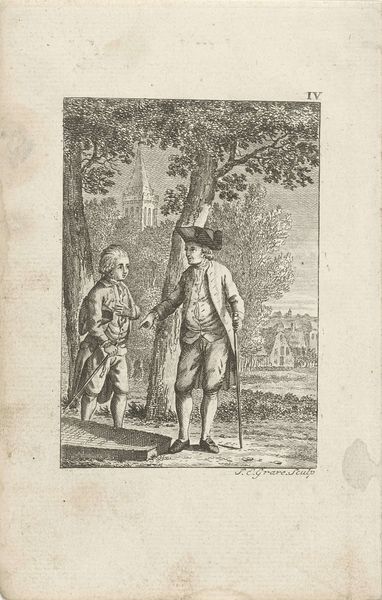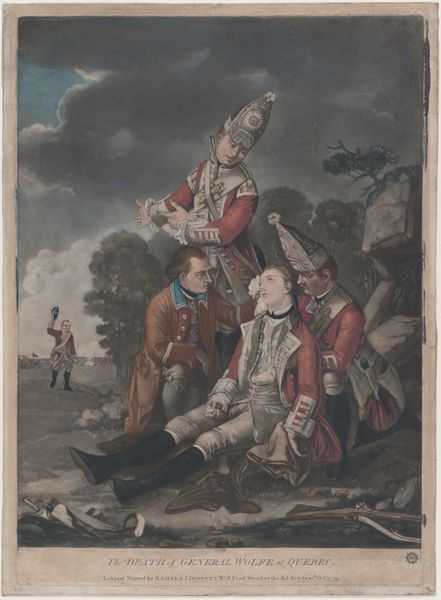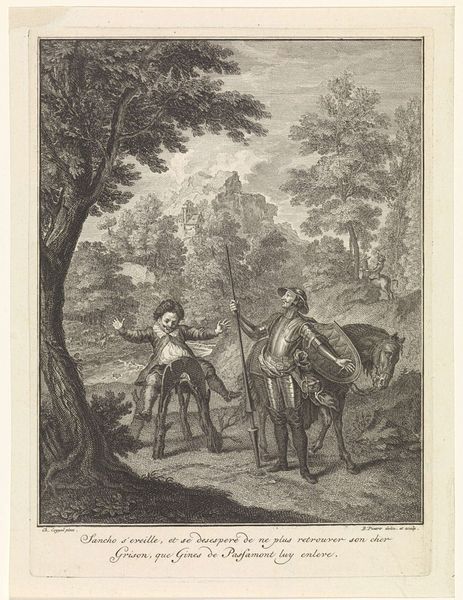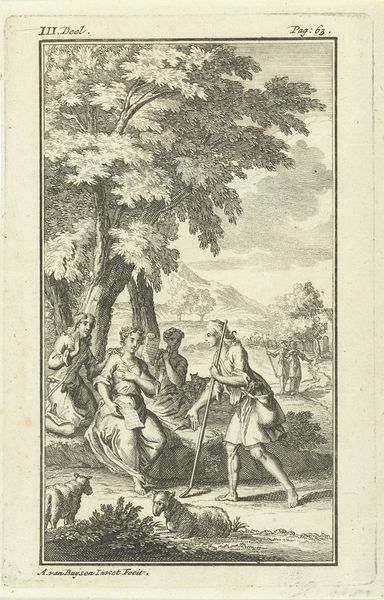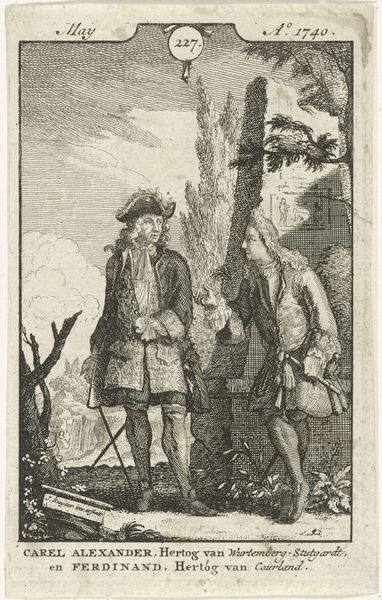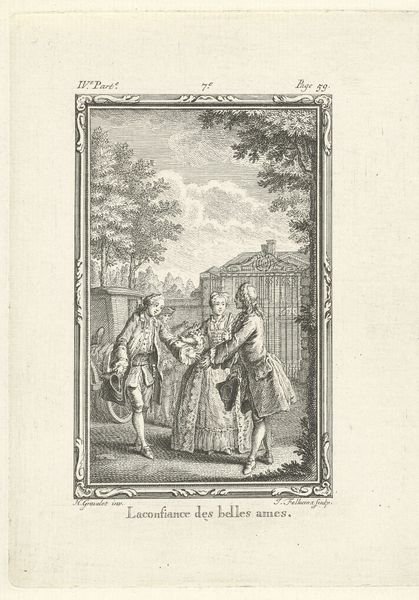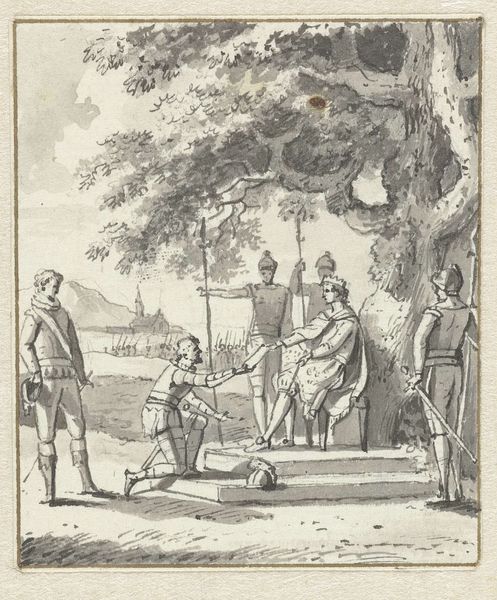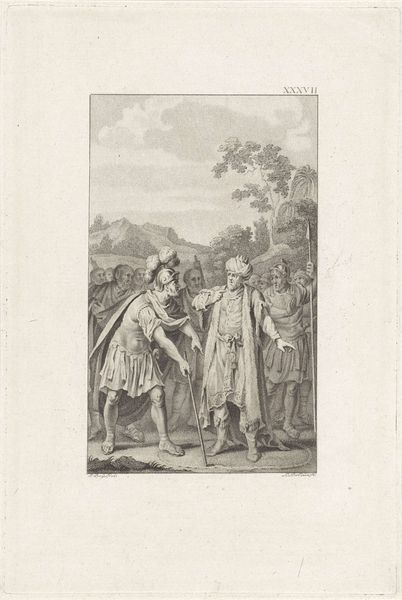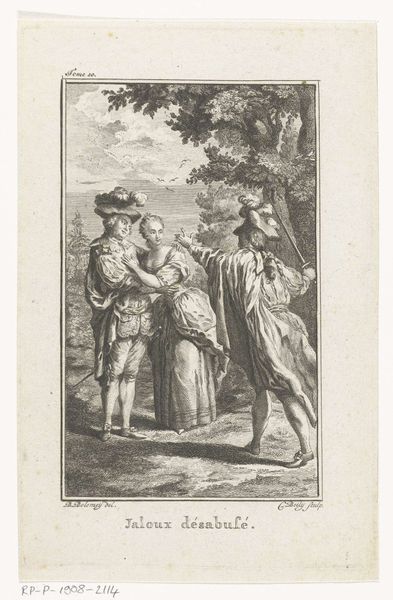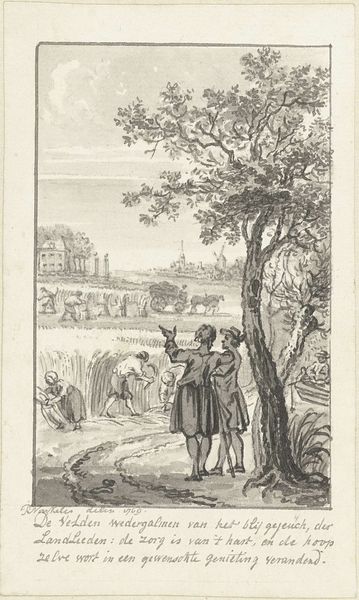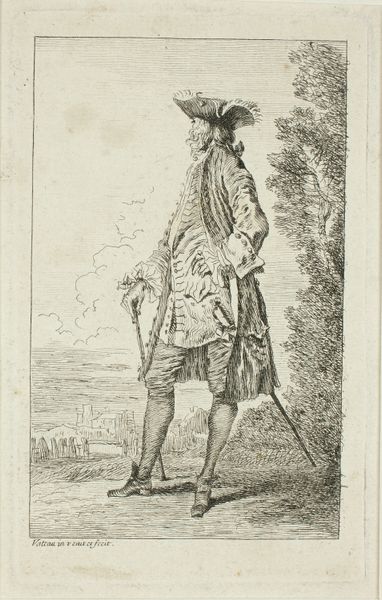
drawing, print, watercolor
#
drawing
#
water colours
# print
#
landscape
#
figuration
#
watercolor
#
genre-painting
#
rococo
Dimensions: 4 11/16 x 3 5/16 in. (11.9 x 8.4 cm)
Copyright: Public Domain
Curator: Let’s discuss this intriguing eighteenth-century watercolor titled "Two dancing male figures in a landscape," currently residing at the Metropolitan Museum of Art. Editor: My immediate impression is one of playful elegance. The soft washes of color create an atmosphere of lightness and leisure, almost as though we are peeking into a private, whimsical performance. Curator: Indeed. The work is an artifact that encapsulates the Rococo period, doesn't it? Consider the figures: their attire speaks to the aristocracy, yet they are depicted engaged in dance within a natural, public space, perhaps suggesting an intersection of class and accessibility. We might also examine the ways performance has historically been tied to expressions of male sociability. Editor: Yes, I agree, it’s fascinating how the anonymous artist utilized watercolor techniques to create that atmosphere of refined frolic. The dynamism in the posture of the figures, enhanced by the fluidity of the brushstrokes, is striking. Have you considered what symbolic meaning the landscape contributes to the painting? Curator: The landscape functions as a space of both performance and respite, but also, potentially, of clandestine encounters. One could easily interpret the carefully arranged trees and the small classical sculpture as coded signifiers pointing toward prevailing sociopolitical norms—perhaps commentary regarding male love that was circulating throughout the period. Editor: That's interesting. From my view, that small sculpture adds an anchor. But the ambiguity regarding this piece’s creator pushes my attention more firmly back into analyzing composition. Perhaps the soft, blended brushstrokes reflect Rococo’s dissolving, sensual aesthetic? Curator: I find that a completely valid point of assessment, particularly given how much significance has been placed on identity and the ways it has influenced perceptions of the world. Looking into this work has expanded our comprehension of power structures interwoven with gendered spaces during that time. Editor: I concur. Even without knowing its provenance, by exploring the aesthetics of Rococo with careful analysis, it continues to charm—a delicate, almost musical moment suspended in time.
Comments
No comments
Be the first to comment and join the conversation on the ultimate creative platform.
